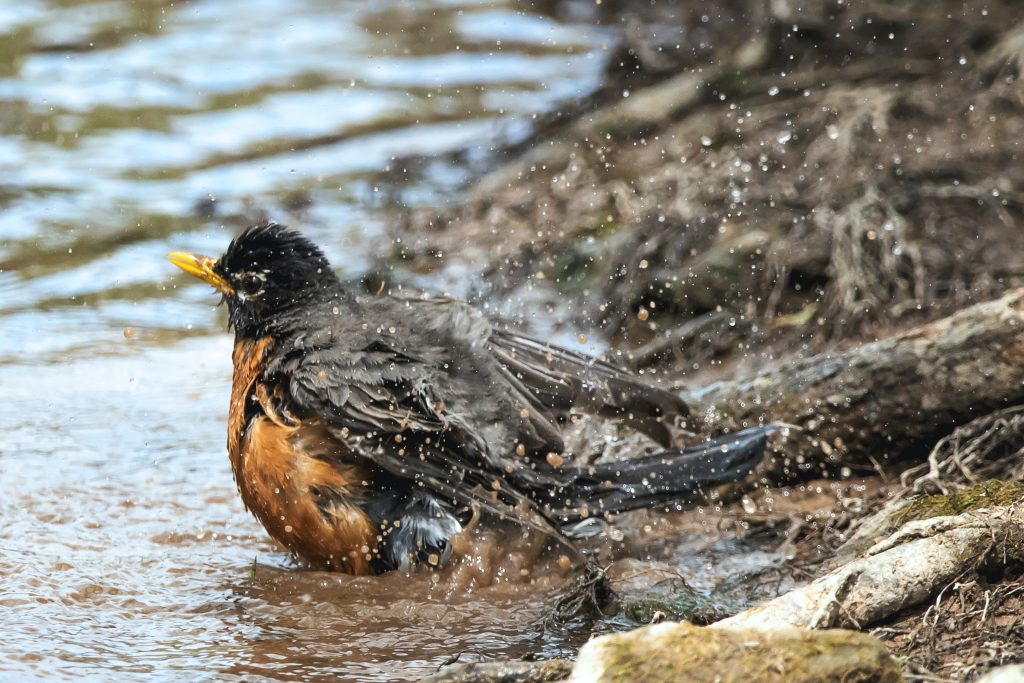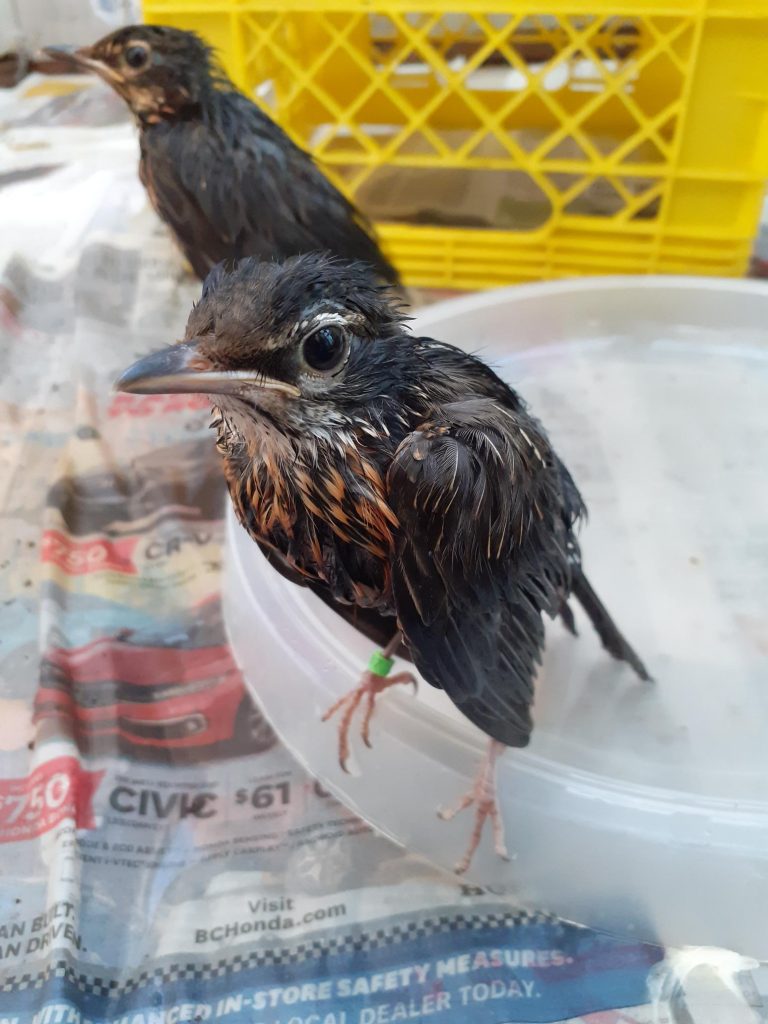Support Us
Since 1979 more than 140,000 animals have been treated by Wildlife Rescue.
Thanks to the support of individuals like you, Wildlife Rescue can provide a lifeline for animals in distress.
During hot weather events, you can help wildlife out by putting out a birdbath for them to cool off in and drink! Don’t have a birdbath? A shallow dish, such as a plant saucer, will suffice!
For their safety, please ensure that:
Offer shade using what you have available:
Did you know that birds lack the ability to sweat?! So how do they stay cool during these HOT summer days?
Birds have developed their own mechanisms for keeping cool, such as panting, puffing up their feathers, and fluttering their wings. They also like to do what we humans like to do – splash around in the water to cool down!
For wildlife in an urban setting, water and shade may be limited. Help wildlife stay cool by providing a safe, shallow, source of water. Keep an eye out for all types of wildlife seeking water bodies in unusual places, such as pools and water fountains, which can trap and potentially drown the animals.

Very few animal species can sweat, so animals struggle to lose excess body heat during extreme weather events. Heat stress can cause animals to have difficulty breathing which may appear as panting, an increased respiration rate, loss of appetite, and drooling.
Signs of overheating in birds include panting, open-mouth breathing, fluffed-up, and lethargy. Some nestlings may jump from their nest due to overheating, and fledglings may wander away from their parents in search of water. Dehydration is a big concern during hot days. If you find a bird that is easily approachable (won’t fly off when approached), looks sleepy (lethargic), is fluffed up, or has any visible injuries or blood, please contact our Support Centre for assistance.
Signs of Heat Wave Induced Distress:
If you find wildlife in distress, please contact our Support Centre at (604) 526-7275. Please be aware that on busy days, our helpline staff and volunteers can have a backlog of calls exceeding two hours. If the situation is dire, follow instructions on this page on how to safely contained an injured animal.
Here at Wildlife Rescue, we work hard to keep all of our patients comfortable during these uncomfortably hot days by providing…
